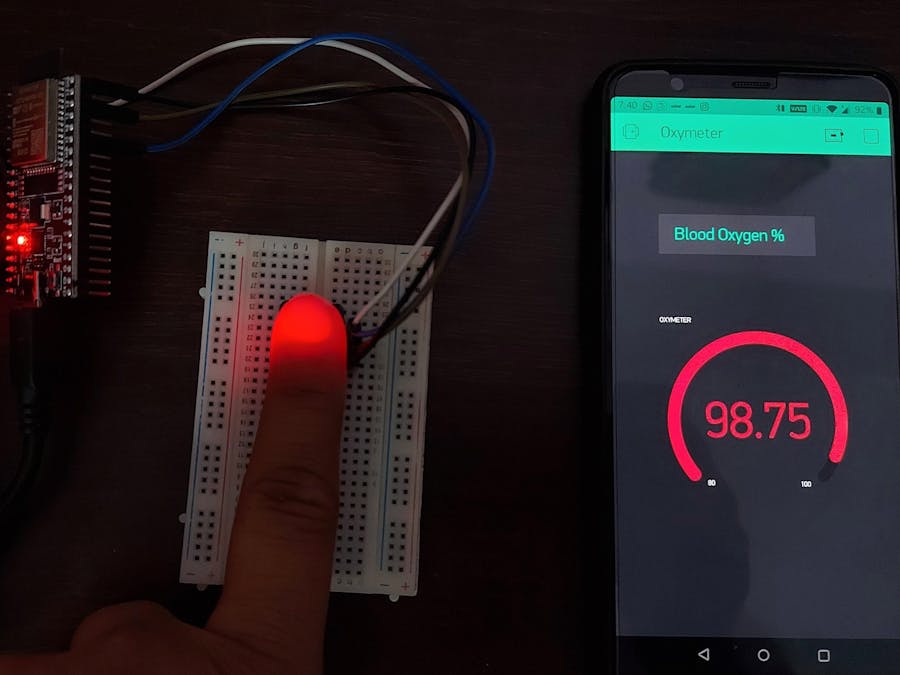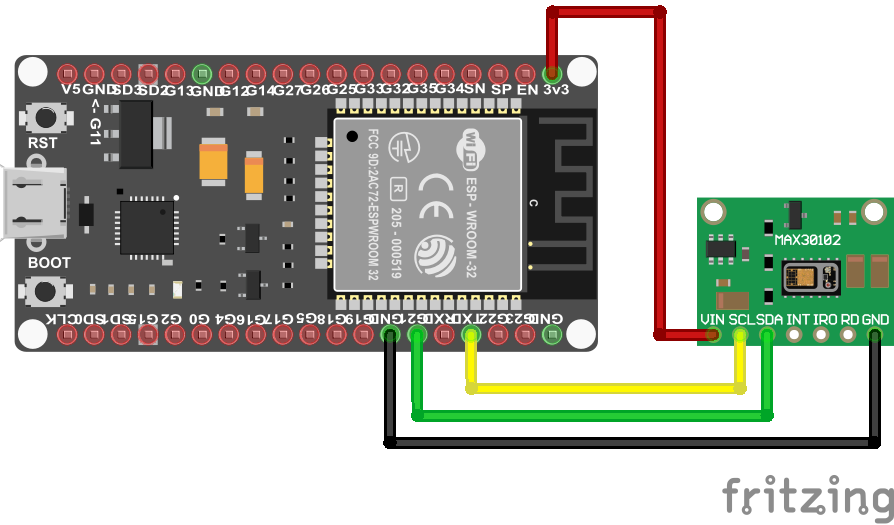In 2020, the world faced an invisible monster named Corona Virus. This Virus made people very sick & weak. Many people lost their good ones.
There was a big problem initially, the problem was the unavailability of proper medical equipment like the monitors to check the blood oxygen levels, ventilators & disinfectants. In this hour of need, we felt that we could help everyone to teach them how to make a DIY Blood Oxygen Meter. This project is dedicated to the soldiers, Doctors & all government officials who helped us throughout 2020.
Gather the Material:All the material mentioned here is easily available in your local market as well as online stores.
- Esp32 Wroom 32D
- Max 30102 Oximeter Sensor
- BreadBoard
- Jumper Cables
- Blynk App in smartphone
This is a DIY project to create a homemade solution for monitoring the blood oxygen level of an individual. The cost of this project is less than 15$.
The main component of this project is:
Max30102 Oximeter Sensor: The MAX30102 is an integrated pulse oximeter and heart rate monitor biosensor module. It integrates a red LED and an infrared LED, photodetector, optical components, and low-noise electronic circuitry with ambient light suppression. - The MAX30102 features a 1.8V power supply and a separate 5.0V power supply for internal LEDs for heart rate and blood oxygen acquisition in wearable devices, worn on the fingers, earlobe, and wrist.
We will be connecting our sensor with the ESP32 board to take inputs & show the monitored oxygen level in Blynk app on our smartphone.
Making the Connections:There are few connections only, viz; (Refer to the connections from the circuit image)
- Connect GND of ESP board to GND of Max30102 sensor.
- Connect 3v3 of ESP board to Vin of Max30102 sensor.
- Connect Pin 22 of ESP board to SDA of Max30102 sensor.
- Connect Pin 21 of ESP board to SCL of Max30102 sensor.
Once the connection is complete we can move to set up the Blynk project.
Setting Up the Project in Blynk:You need to install the Blynk app on your smartphone. Create one account or login if already created.
Follow the steps:
- Create a new project & give it a name.
- Select board as ESP32 developer board.
- Now add two widgets; Gauge & Labeled Value.
- Edit the Gauge setting: Change the Pin as Virtual V4 & value from 0 to 100.
- Edit the Labeled value: Change the label as "Blood Oxygen %".
- Complete Setup
The code attached here is complete. You just need to make some changes according to your "Blynk Auth Token" & Wifi Settings. Upload it with Arduino IDE.













_1x_bGT19vVAby.png?auto=compress%2Cformat&w=40&h=40&fit=fillmax&bg=fff&dpr=2)


Comments